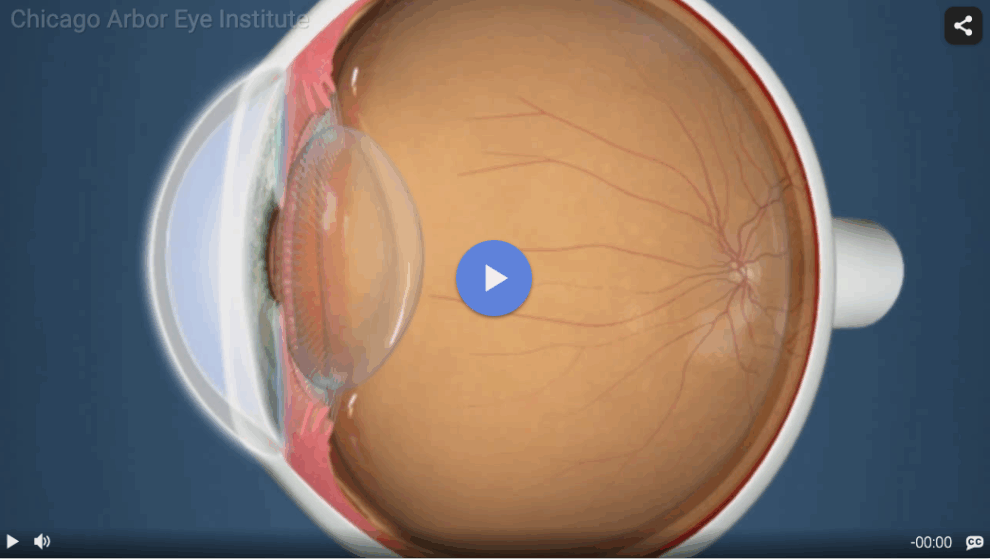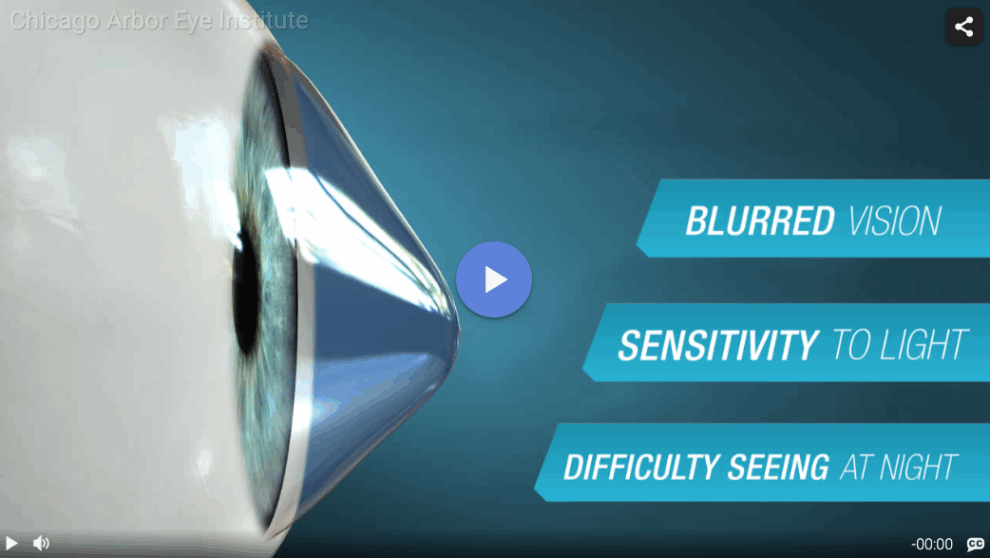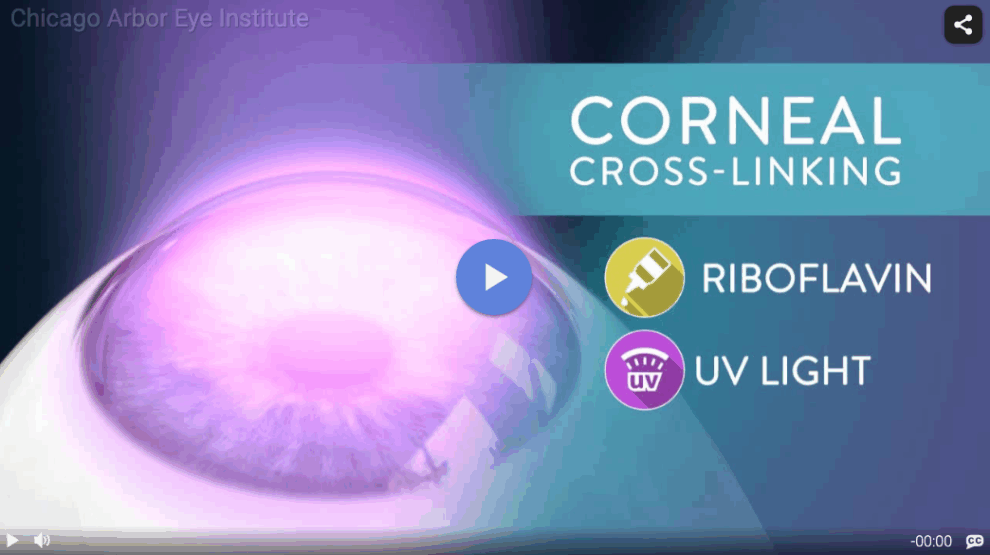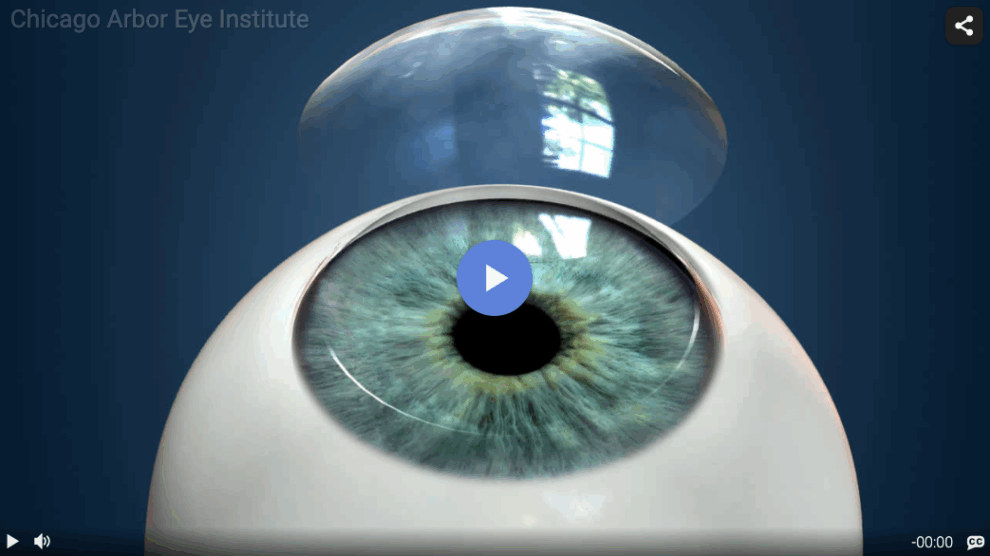Cornea
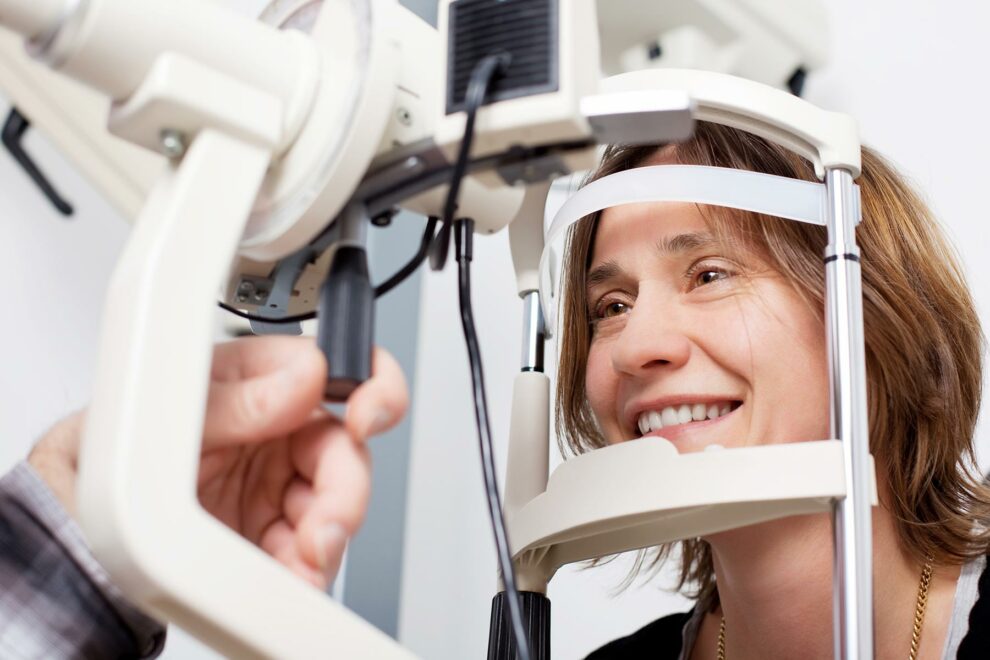
At Chicago Arbor Eye Institute, our team of skilled eye doctors is dedicated to preserving and restoring vision. One of our areas of expertise is the diagnosis and treatment of corneal conditions, as the cornea plays a crucial role in maintaining clear, healthy eyesight.
What is the Cornea?
The cornea is the transparent, dome-shaped window at the front of the eye. It serves as a protective covering and plays a crucial role in focusing light that enters the eye onto the retina at the back of the eye, allowing you to experience clear vision.
The cornea is made of several layers of cells and proteins. The outermost layer, called the epithelium, blocks any foreign particles from getting into the eye and absorbs nutrients from tears.
The middle layer, known as the stroma, makes up about ninety percent of the cornea’s thickness and provides its dome shape. The innermost layer, the endothelium, pumps excess fluid out of the stroma.
Many eye conditions can affect the cornea, altering its shape or causing it to become cloudy. These changes can alter vision, sometimes significantly, if left untreated.
By having regular eye exams and scheduling appointments right away if you notice vision changes, your eye doctor at Chicago Arbor Eye Institute may be able to detect cornea conditions early.
How Do Eye Doctors Diagnose Cornea Conditions?
To diagnose cornea conditions, eye doctors perform a comprehensive eye exam that includes several tests. The exam usually starts with your eye doctor asking about your medical history and any vision problems you’ve noticed.
Next, your eye doctor will check how clearly you can see using a visual acuity test, which measures the sharpness of your vision. They will then use a special microscope called a slit-lamp to closely examine the front part of your eye, including your cornea.
To get a detailed look at the shape and curve of your cornea, your eye doctor may do a test called corneal topography. This creates a map of your cornea’s surface.
Sometimes, they may also use a special imaging test that takes pictures of the layers of your cornea to check its thickness and structure. By using these different diagnostic tests, eye doctors can identify and diagnose various cornea conditions accurately.
This helps them create the best treatment plan to protect your vision and keep your eyes healthy.
What Conditions Can Affect the Cornea?
Several conditions can impact corneal health and function. At Chicago Arbor Eye Institute, our cornea specialists treat a variety of conditions that affect the surface of the eye, such as:
Keratoconus
Progressive thinning and bulging of the cornea into a cone-shape
Corneal Ulcers
Open sores on the cornea, often due to infection
Fuchs’ Dystrophy
Gradual deterioration of endothelial cells, leading to corneal swelling and clouding
Corneal Abrasions
Scratches or cuts on the surface of the cornea
Corneal Scarring
Often occurs after injury or infection
Dry Eye Syndrome
Inadequate tear production, resulting in a dry, gritty-feeling cornea
Pterygium
Growth of pink, fleshy tissue on the cornea
Many of these conditions can be managed with medications, special contact lenses, or other treatments. In more advanced cases, a corneal transplant may be necessary to restore clear vision.
What is Keratoconus?
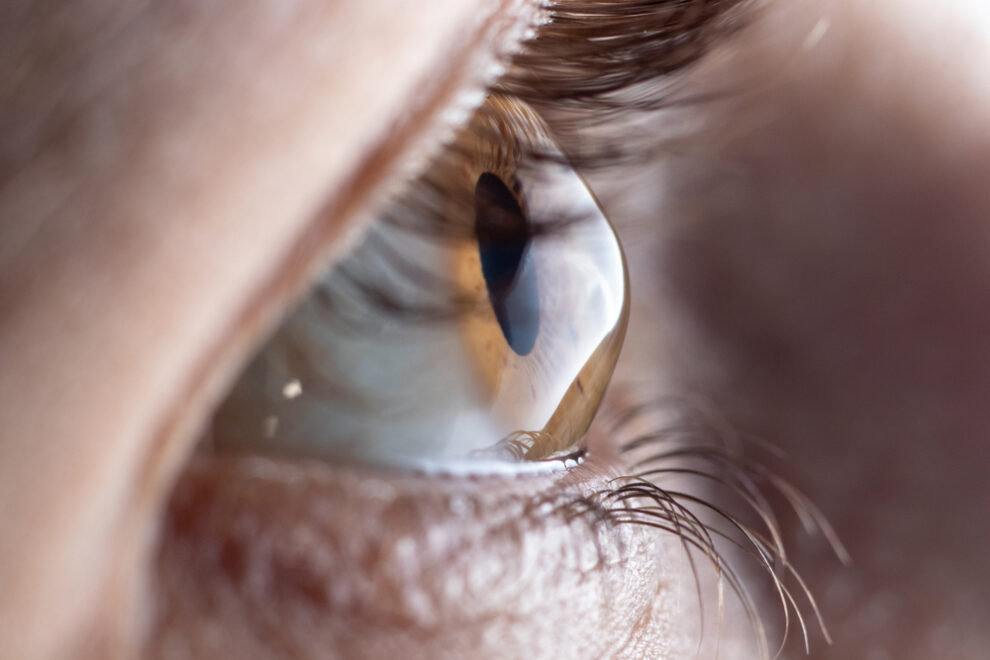
Keratoconus is an eye condition that causes the usually round, dome-shaped cornea to gradually thin and bulge into a cone-like shape. This shape change weakens the cornea and distorts vision, often making even simple tasks like reading or driving difficult.
Keratoconus typically begins in the teen years or early twenties but can develop later in life as well. Symptoms usually start mild and progress over ten to twenty years.
In advanced keratoconus, the cornea can develop scarring, leading to further vision loss. Each eye can be affected differently.
Early signs and symptoms of keratoconus include:
Without treatment, keratoconus can lead to significant vision loss. In early stages, glasses or specialty contact lenses can often provide clear, comfortable vision.
As the condition progresses, corneal cross-linking or a corneal transplant may become necessary.
What is iLink Corneal Cross-Linking?
iLink corneal cross-linking is the only FDA-approved procedure to slow or halt the progression of keratoconus. At Chicago Arbor Eye Institute, we perform this minimally invasive treatment for patients with progressive keratoconus or corneal thinning.
During the sixty-minute procedure, riboflavin eye drops are applied to the cornea and activated with ultraviolet light delivered by the cross-linking system. This creates new bonds between the collagen fibers in the cornea, strengthening and stiffening it.
After numbing the eye, the epithelium, the outermost corneal layer, is gently removed to allow the riboflavin to fully penetrate the cornea. The riboflavin drops are then applied for thirty minutes before the UV light is used to activate them.
Finally, a protective contact lens is placed on the eye. By halting the progression of corneal thinning and warping, iLink makes it possible to achieve good vision with glasses or contact lenses and avoid the need for a corneal transplant in many cases.
Most patients are able to resume normal activities within a few days after treatment.
What is a Corneal Transplant?
A corneal transplant is a surgical procedure that replaces part or all of a diseased or damaged cornea with healthy donor corneal tissue. Also known as keratoplasty, it can restore vision in advanced corneal conditions and help relieve eye pain.
During the procedure, the abnormal corneal tissue is carefully removed and replaced with a precisely-shaped graft of healthy donor tissue. The graft is then sutured in place.
Over time, the transplanted corneal cells integrate with the surrounding tissue. Full recovery after a corneal transplant can take up to a year, but most people are able to return to their normal routines within a few weeks.
Vision typically improves gradually in the months following the procedure as the eye adapts to the new cornea. Though corneal transplants have a high success rate, the risk of rejection is an ongoing concern.
Patients must be closely monitored in the months and years after the procedure and may need to use steroid eye drops long-term to prevent rejection.

